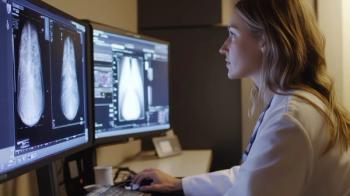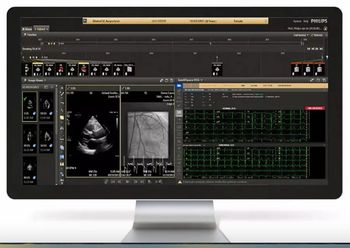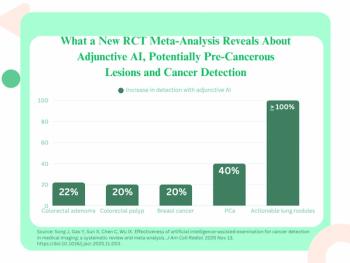
Strong clinical case for 64-slice CTA faces business factors
The clinical case for using 64-slice scanners to perform CT angiography is strong. The newest high-slice machines can get results that would have been difficult or impossible to achieve with 16-slice scanners.
The clinical case for using 64-slice scanners to perform CT angiography is strong. The newest high-slice machines can get results that would have been difficult or impossible to achieve with 16-slice scanners.
But is it worth making a multimillion dollar investment in relatively new technology for a procedure that is still not universally reimbursed? To figure that out, physicians and practice managers must evaluate their patient base, consider all the costs, study the reimbursement situation in their state, and take a hard look at the nature of their practice.
Costs are substantial, and the equipment purchase fee is just the start.
"You're not just buying a scanner," said Cathleen Biga, president and CEO of Cardiovascular Management of Illinois. "You've got to take into account the room buildout cost, the electrical and cooling requirements. You need high-speed cable modem for Internet capacity. You have to decide whether you're going to do overreads or whether you're going to read them on your own."
Biga estimates that a practice will invest $150,000 to $200,000 to start in the CTA control and reading rooms. Even if a facility already has a dedicated CT space, installing a 64-slice scanner will likely entail at least electrical and cooling modifications. Structural changes may also be necessary, as Biga's group found when it upgraded its order from a 16-slice to a 64-slice scanner.
"The buildout for the room had been done to accommodate a 16-slice scanner, not a 64," she said. "We had only about one-quarter-inch clearance at the door opening, and it took them a couple of hours to get the gantry to through the doorway. Luckily, the floor support was okay."
Beyond the physical costs, radiology and cardiology groups must weigh different factors when considering a 64-slice scanner.
Cardiology groups that self-refer must consider the size of the practice and the patient population it draws from, said Jerome Hines, president of Illinois Heart and Vascular. His group, a partnership of 25 cardiologists, acquired its 64-slice scanner in spring 2005.
The investment has paid off. The group anticipated the break-even point would be between five and seven cases a day, depending on the mix of peripherals that were part of the day's work. Currently, Illinois Heart and Vascular averages between seven and 10 cardiac CTA procedures a day.
A larger practice will have an easier time drawing enough patients to feed the scanner, Hines said.
"Depending on the type of practice and the geographic area, anywhere between seven and 12 cardiologists could support a scanner," Hines said. "If you're a group of less than seven or eight, it's a stretch. If you're a group of 12 or more, it's a slam dunk."
Radiology practices, on the other hand, can expect to get patients referred from primary-care providers, surgeons, and other physicians. These referrals should be the basis of a radiology group's coronary imaging practice, said Dr. David Dowe of Atlantic Medical Imaging, a New Jersey practice that has pioneered coronary CTA.
"Without question, 91% of our coronary CTAs--and I think we do more than anyone in the U.S.--come from primary-care docs, surgeons, nurse practitioners, and self-referrals," Dowe said. "I depend on cardiologists for only 9% of my coronary CTA work."
The geographic area is a key component. Reimbursement for coronary CTA is growing, but it is by no means universal. Noridian, which serves as the Medicare intermediary for 11 states, has yet to issue a Local Coverage Determination. Montana does not cover the procedure at all.
But the geographic component can work in a practice's favor as well. Physicians in underserved areas will have an easier time integrating the new technology into their practices than those in more competitive markets.
Suzette Jaskie, CEO of Western Michigan Heart, for example, expects investing in a 64-slice scanner and offering cardiac CTA to widen her group's patient base rather than cutting into existing revenue streams by allowing the group to see patients earlier in the progress of disease. But even with a relatively secure patient base, Jaskie said the margins for performing cardiac CTA remain razor thin.
Radiology groups may have an easier time justifying a purchase in the current reimbursement atmosphere, Dowe said.
"I don't think cardiac CT will ever be reimbursed and have a better business model than the nuclear stress test. From a business standpoint, this is a downhill slide for cardiologists," Dowe said. "They're going to have to do it, because no one is going to want a stress test anymore, but it is definitely a business negative for the cardiology group. For the radiology group, it's a business positive, because none of these patients are in our system right now. If it weren't for coronary CTA, no chest pain patients would be coming to me. So whatever it is reimbursed at, it's a positive."
Dowe cautions that radiologists cannot depend on cardiac imaging alone to justify the price.
"Radiologists have to be able to make sure they can afford the scanner based on noncardiac imaging, period," he said. "Don't count on the cardiac dollars because the reimbursement is so sketchy and we're without question in the most hostile reimbursement environment that I've ever seen in radiology. It's not going to get better for five to seven years."
Despite the reimbursement perils, Dowe contends that a 64-slice scanner is a minimum requirement for radiologists looking to get into the coronary imaging field.
"The last thing you want to do when you're buying technology such as this is buy yesterday's technology," Dowe said.
Cardiologist Hines agrees with Dowe's assessment.
"There's a quantum leap from 16- to 64-slice scanners," Hines said. "As soon as we saw the images that were possible with a 64 slice, we as a group voted to purchase a 64-slice scanner and not even consider a 16-slice. In retrospect, it was probably the best decision we made."
Newsletter
Stay at the forefront of radiology with the Diagnostic Imaging newsletter, delivering the latest news, clinical insights, and imaging advancements for today’s radiologists.


























